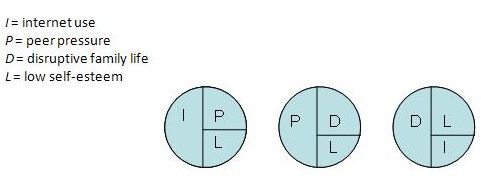Reference no: EM13758370
As you work through these questions, remember that association does not equal causation. If a statement sounds reasonable, you may find it helpful to try to refute any arguments for causation - think about reasons a factor is unlikely to operate as a cause. In fact, the best way to approach causality if often to try to create a counterargument for causality. For example, if the rooster crows at the break of dawn, then the rooster caused the sun to rise. We can refute this statement by hypothesizing that if we kill the rooster (or perhaps just sedate him for awhile), the sun will still rise. Imagine scenarios where your causal argument would not work, and move through the logic. This is what epidemiologists do every day!
Association does not necessarily mean causation. Consider the role of each component cause and a necessary cause (if there is one) in a completed sufficient cause. Be sure to ask yourself "what is a cause?"
Part A.
Read the online news clipping about the fictitious town of Epiville
Using your knowledge of causal criteria, which of the following statements best explains the Mayor's false belief that increasing the stork population would increase the birth rate? Explain why the other 2 are false.
1 The Mayor implied there was an association between the stork population and the birth rate that was not there.
2 The Mayor mistakenly thought that 2 factors which are statistically associated (the stork population and the birth rate) must be causally related.
3 The Mayor neglected to look at the statistical significance of the association. Only if the results were statistically significant could he conclude that a causal relationship exists.
Part B.
Imagine you are an intern at your state health department, which has just launched a new initiative to reduce risk-seeking behaviors among adolescents. The Commissioner asks you if you think that internet use among adolescents is "a cause" of risk-seeking behavior (e.g., smoking, drinking, skipped meals, irregular sleep habits, and sexual activity). You think back to your Introduction to Epidemiology class and recall that epidemiologists have a fairly distinct definition of "cause". Which of the following statements best describes the hypothesized causal link between internet use and risk-seeking behaviors, and why? For the other 2 statements, why do they not describe the causal link?
1 All individuals with long hours of Internet use during childhood will go on to risk-seeking behaviors in adolescence.
2 All individuals who initiate risk-seeking behaviors in adolescence would have been exposed to substantial internet use during childhood.
3 Individuals who spend a substantial amount of time on the internet in childhood are more likely to initiate risk-seeking behaviors in adolescence, compared with those individuals who use spend little or no time on the internet during childhood.
Part C.
You decide to draw some "causal pies" to help you think about how internet use might act as a cause of risk-seeking behavior in adolescence. Based on the causal pies given below, answer the following questions. Explain your answer - if it is true, what is the rationale? If it is false, why?

1. True or false: Internet use is a necessary cause of risk-seeking behavior.
2. True or false: Internet use is a cause of risk-seeking behavior that is neither necessary nor sufficient.
3. True or false: Internet use is a sufficient cause of risk-seeking behavior.
4. Do these sufficient causes yield alternative hypotheses about possible causes of risk-seeking behavior in adolescents?
|
Squire transportation is a large national truckload
: Squire Transportation (Squire) is a large national truckload (TL) carrier in the United States covering routes going both east-west and north-south. Squire’s average length of haul is 1,200 miles with approximately 10 percent empty miles.
|
|
What-if analysis component
: This module's project piece adds a What-If analysis component into your Excel project workbook. Using whatever tools and examples are at your disposal, incorporate at least one supported What-If analysis into your Excel project workbook
|
|
Manufacturing company annual report
: Using the library and other course resources, find a manufacturing company's annual report.
|
|
Public "personal" clouds
: Public "Personal" Clouds on page 218 in the text and answer the questions below. APA formatting guidelines require a title page, abstract page, and reference page in addition to the body of the paper.
|
|
Counterargument for causality
: As you work through these questions, remember that association does not equal causation. If a statement sounds reasonable, you may find it helpful to try to refute any arguments for causation . In fact, the best way to approach causality if often ..
|
|
Special hologram baseball cards
: Now assume that the Hall of Fame wants special hologram baseball cards. Collectible Cards must spend $5,000 to develop this hologram, which will be useless after the special order is completed. Should Collectible Cards accept the special order und..
|
|
Perform a risk analysis on the reengineered process
: perform a risk analysis on the reengineered process. identify obstacles to the reengineered process. evaluate obstacles to the reengineered process
|
|
Graphic-rating scale method of performance appraisal
: Discuss the job dimensions that can be measured by the graphic-rating scale method of performance appraisal. Identify the problems that are associated with graphic-rating scales.
|
|
Company first international expansion
: Imagine that you are an executive for XYZ, Inc., a high-end retail chain that sells luxury watches, jewelry, and hand bags. You've just been put in charge of the company's first international expansion, opening a store in Shanghai, China.
|